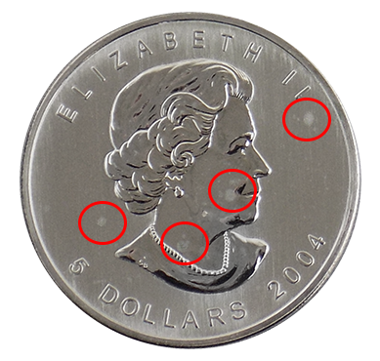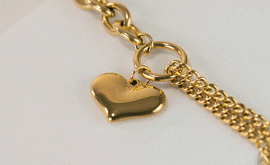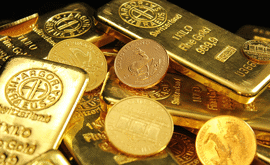What Are Milk Spots & How Do They Affect The Value Of Silver Coins?
A subject we are often asked about is milk spots on silver coins. A concern for bullion investors and mints around the world for many years, these white marks may have an impact on the coins' aesthetic appeal, but do they affect the value of your coin? Can they be removed? Read on to find out.
What are milk spots?
Milk spots are white, milky marks that sometimes appear on the surface of silver coins and bars. These marks resemble dried milk and can vary in size and shape.
Milk spots can occur on both bullion and Proof finished coins, but they are more commonly found on silver bullion coins with a purity of 999.0 or higher, and are rarely seen on older coins with alloys.
Where do milk spots come from?
It is widely thought that milk spots may be formed during manufacturing, as a result of the chemicals used during the minting and annealing process.
However, there is no confirmed single root cause of these stubborn spots. Multiple factors may possibly have an impact, including the way the silver reacts with contaminants in the processing, handling, and storage of the coins.
Milk spots occur in an unpredictable way, and can appear on silver coins days, weeks, months, or even years after the coins are minted.
Milk spots are fairly common, with the problem not limited to a single mint, and can not only affect silver coins but also bars too.
Preventing milk spots
Unfortunately, there is no definitive way for silver investors to prevent milk spots. Some investors believe that storing and handling your coins wisely can help in the prevention of the appearance of spots. Good quality encapsulation within a container that limits the metal’s exposure to the air and the elements can help to prevent silver coins and bars from premature discolouration. However, if these white marks are indeed developed during the production process, some coins may still develop white spots eventually.
In recent years, The Royal Canadian Mint have investigated the milk spot issue, and claim to have identified the primary cause. A new patented technology named MINTSHIELD™ has now been developed by the mint’s engineers to tackle the root cause of white spots. A closely guarded secret, this technology claims to significantly reduce the appearance of white spots for years. All silver maple leaf bullion coins dated 2018 and later are now protected with MINTSHIELD™, and this process appears to have reduced the occurrence of milk spots in silver Maples.
The Perth Mint has also taken steps to attempt to identify and tackle the milk spot problem and implemented measures such as frequent cleaning of filters to remove any oil and water build-up, and replacement of air-conditioning filters in order to reduce airborne particles affecting the areas where coins are produced.
Do milk spots affect the value of a silver coin?
Milk spots should not affect the resale value of a silver bullion coin.
Bullion coins are manufactured purely for investment purposes, and are typically valued due to the weight of the precious metal content contained within the coin, not specifically by condition or aesthetic appeal. No matter what marks may appear on the surface of a silver bullion coin or bar, an ounce of silver remains an ounce of silver.
However, some collectors buying Proof coins may be a little more concerned about the appearance of milk spots, as these items are often purchased at a higher price due to their numismatic appeal and a collector may require the coin to be in as perfect condition as possible.
Can milk spots be removed from a coin?
It is widely recommended that the advice for removing milk spots is the same for cleaning any silver coins – it should be avoided if possible.
As the presence of milk spots on silver bullion coins has no negative effect on resale value, it is recommended that you should leave the spots where they are. Any attempt to remove them would most likely lead to damaging the coin, merely replacing these stubborn spots with small scratches which could worsen the appearance of the coin.
Some collectors determined to attempt removal of milk spots from their coins have used a good quality silver polishing cloth, or a clean, soft white pencil eraser over their coins. A chemical ‘silver dip’ that removes a very thin layer from the surface of the silver item is another method chosen by some. However, this should be undertaken with great care as it carries the risk of damaging the coin and, again, is not something we would recommend.
The outlook for silver coins
The issue of milk spots has been a hot topic of discussion among bullion investors and dealers across the world for years, and with some mints now attempting to take steps to tackle the problem it seems hopeful that these unsightly spots may eventually be eradicated in the future.
In the meantime, the majority of experienced investors and collectors of silver bullion accept the appearance of milk spots as a common occurrence and, just as they currently do with the appearance of tarnishing, as further proof of the authenticity of the silver. Just as a collector today may look at a deep coloured patina on an old silver coin as a feature, maybe in the future they may look at milk spots in the same way?
Atkinsons Bullion and Coins sell a wide selection of silver coins and bars for investment purposes. If you have any questions or would like to know more about buying or selling gold bullion or silver bullion, please call and speak to a member of the team on 0121 355 0620 or send an email to info@atkinsonsbullion.com.
Why Join Our Mailing List?
By signing up, you'll gain access to exclusive updates, early announcements, and tailored insights into the world of bullion and precious metals.

Latest Updates On Bullion

New Releases

Special Offers

Market Analysis
This blog represents one person’s opinion only. Please note, gold and silver prices may go down as well as up. Atkinsons Bullion & Coins accepts no responsibility for any losses based on information we have provided. We do not offer investment advice. Please carry out your own research before making an investment decision.














